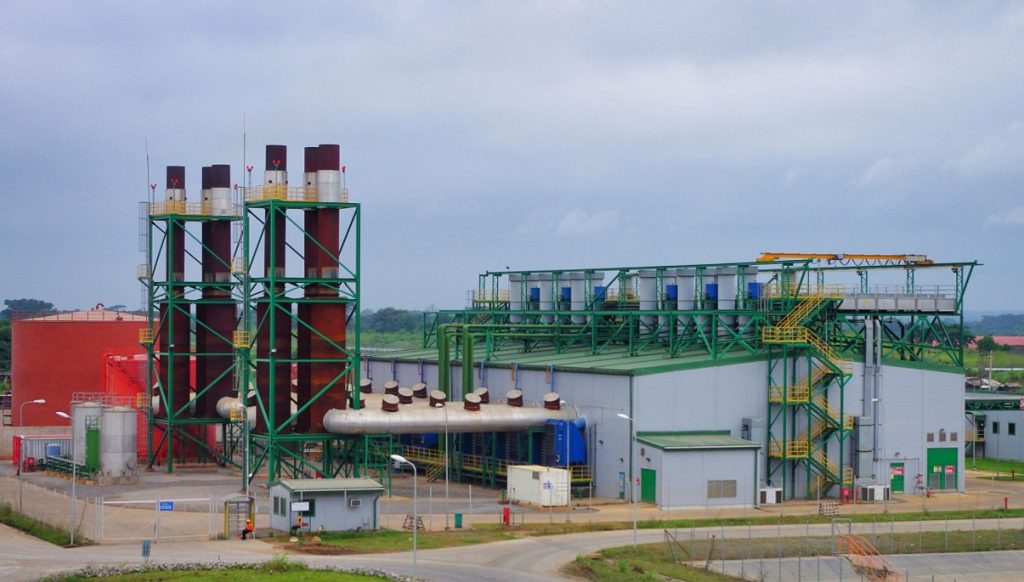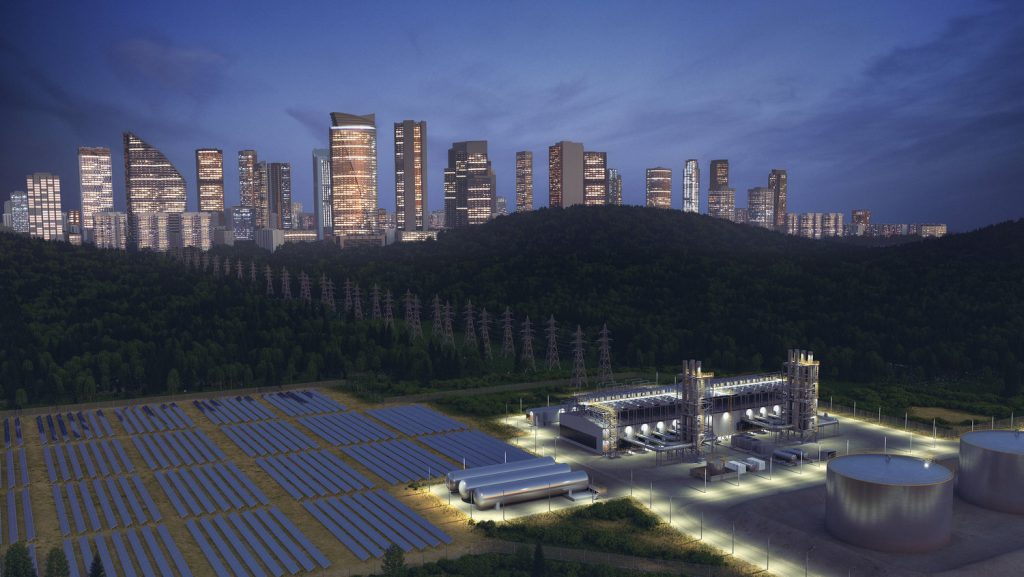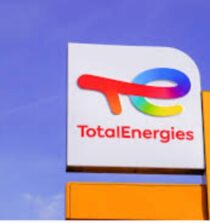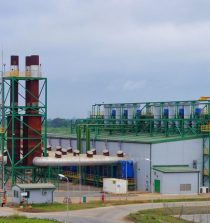The technology group Wärtsilä has signed a 5-year long-term Operation & Maintenance (O&M) agreement with Lafarge Africa Plc, one of Nigeria’s leading building material producers. The agreement covers the 100 MW Lafarge Ewekoro power plant, which provides a dedicated supply of electricity to the company’s concrete and cement manufacturing processes.
Signing of the O&M agreement took place in July 2021, and is an extension of a previous 10-year agreement.

The captive Ewekoro plant was supplied and commissioned by Wärtsilä in 2011. It consists of six Wärtsilä 50DF dual-fuel engines, operating primarily on gas, but with the flexibility to automatically switch to liquid fuel in case of a disruption to the gas supply. Similarly, should the quality of the gas supply be disrupted, the Wärtsilä engines will continue to operate efficiently, delivering an assured and reliable power supply to the facility. Unlike gas turbine plants, the engines will also function efficiently with a low-pressure gas supply, thus providing a huge advantage given the region’s vulnerability to such interruptions.
The captive power plant provides the cement production facilities steady supply of electricity and an efficient use of available natural gas as primary fuel. By having Wärtsilä operate and maintain the power plant, the customer can focus on its core business to deliver construction materials to Nigeria.
“We have benefited significantly from the efficient way by which Wärtsilä has operated and maintained this plant for the past ten years, and we had no hesitation in extending the agreement for a further five years. An uninterrupted reliable supply of electricity is essential to our production, and having our own power plant, built, operated and maintained by Wärtsilä, gives us this assurance,” said Lanre Opakunle, Strategic Sourcing Director, Power & Gas, Middle East & Africa, Lafarge – a member of Holcim Group.
“Lafarge has been a customer with whom we have built a strong relationship over a number of years. Their readiness to renew this O&M agreement is a clear indication of satisfaction with our performance, and of how it supports the achievement of their business goals,” commented Marc Thiriet, Energy Business Director, Africa West, Wärtsilä Energy.

The scope of the agreement includes the operating crew, performance guarantees, plant availability, and spare parts.
Wärtsilä has also supplied Lafarge with another 100 MW power plant located in Mfamosing, Nigeria. With a total of 200 MW of generating capacity to the same customer, Wärtsilä has established a high level of trust that validates the efficiency of the company’s flexible and reliable technology.
Since 2010, Wärtsilä has had a strong presence in Nigeria with a total installed capacity of 667 MW. The company locally employs approximately 90 people. In Africa, Wärtsilä has an installed footprint of more than 7000 MW.








I don’t think the title of your article matches the content lol. Just kidding, mainly because I had some doubts after reading the article.
Human Growth Hormone (HGH): What Is It, Levels, And More
HGH, or Human Growth Hormone, also known as Somatotropin, is a peptide hormone
that stimulates growth, cell reproduction, and regeneration.
It is produced by the anterior pituitary gland and plays a crucial role in human development, metabolism, and overall health.
What Are Normal HGH Levels?
Blood levels of HGH fluctuate throughout the day, reaching
peaks during sleep (especially during rapid eye movement sleep
– REM). Here are some general guidelines for normal HGH levels:
Children and adolescents: High levels due to growth spurts
Grown adults: Lower baseline levels, often below 10 ng/mL
Pregnant women: Elevated levels (up to several hundred ng/mL)
Elderly individuals: Reduced levels, sometimes indicating age-related decline
What Influences HGH Levels?
HGH secretion is regulated by a complex interplay of factors, including:
Growth hormone-releasing hormone (GHRH) from the hypothalamus
Suppressing factors like somatostatin and glucose levels
Lack of sleep, poor diet, and chronic stress can negatively impact HGH
production
High levels of estrogen or testosterone may suppress HGH secretion in adults
What Are the Signs of Low HGH Levels?
Low HGH levels can lead to a variety of symptoms, including:
Short-term growth failure in children
Weight gain, especially around the waist
Fatigue and mood swings
Reduced muscle mass (sarcopenia)
Insulin resistance and type 2 diabetes
HGH Testing and Diagnosis
HGH levels are typically measured through blood tests, which
can help determine if your levels are within the normal range or indicate
a deficiency. Interpretation of test results
should be done in consultation with a healthcare
professional.
What Is HGH?
Human Growth Hormone (HGH) is a peptide hormone produced by
the pituitary gland, responsible for growth,
cell reproduction, and regeneration. It plays a critical role in childhood development, helping individuals achieve proper height and overall health.
HGH levels peak during early adulthood and gradually decline as people age.
Production
HGH is manufactured by the pituitary gland, but it can also be
produced synthetically for medical use. Endogenous
production naturally decreases with age, leading to various health issues such
as weight gain and fatigue. Synthetic HGH is used
in treatments for conditions like growth hormone deficiency and Turner syndrome.
Function
HGH stimulates growth by promoting the division of cells, increasing bone
density, and enhancing protein synthesis. It also plays a role in metabolism
regulation and may help combat age-related decline in muscle mass and function.
Growth Hormone Disorders
Excess or deficiency of HGH can lead to significant health issues.
Conditions like acromegaly and gigantism occur when excessive growth hormone is produced, leading to enlarged bones and organs.
Conversely, severe HGH deficiency can result in metabolic disorders and premature aging.
Acromegaly
Acromegaly is a condition characterized by the overproduction of
HGH, causing abnormal growth in body tissues. This leads to enlarged hands, feet, andorgans, often resulting in health complications such as heart
issues and joint pain.
Gigantism
Gigantism is similar to acromegaly but occurs during childhood due to excessive HGH production, leading
to excessively large bones and organs. This condition can be life-threatening if not properly managed with
medication or surgery.
HGH Deficiency
HGH deficiency can lead to short stature in adulthood
and various metabolic disorders. Treatment often involves regular injections of synthetic growth
hormone to stimulate growth and improve health outcomes.
Use and Benefits
HGH is used medically to treat conditions such
as growth hormone deficiency, Turner syndrome, and chronic kidney disease.
Its benefits include promoting growth, enhancing bone
density, and improving quality of life for
patients with metabolic disorders.
Side Effects
While HGH can be highly beneficial, it also carries potential
side effects. These may include temporary discomfort during injections,
as well as more serious issues like joint pain, high
blood pressure, and type 2 diabetes in rare cases.
HGH Doping and Misuse
HGH is sometimes misused by athletes and bodybuilders to enhance
physical performance. However, its misuse can lead to severe health risks, including organ damage and potential legal consequences due to its classification as a performance-enhancing substance.
HGH Safety
When used responsibly under medical supervision, HGH
is generally safe. Its safety depends on proper storage, correct administration, and adherence to dosage guidelines provided by healthcare professionals.
Misuse of growth hormone can lead to dangerous side effects and legal penalties.
Always consult a doctor before using HGH for any purpose.
My website :: steroids anabolic; neolifekenya.com,